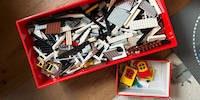
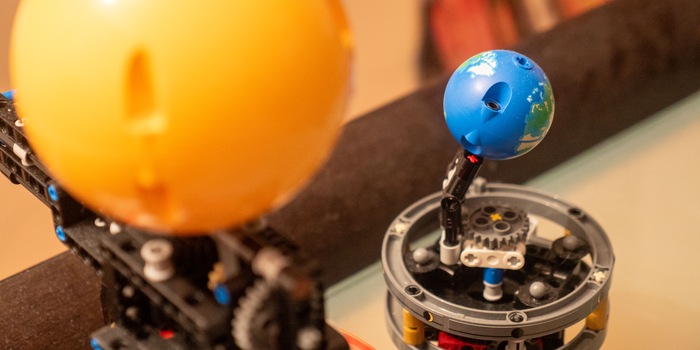
Learning with Lego: «Planet Earth’s in the kitchen!»
I recently went over to a friend’s house to test a telescope together. At least that was the plan. No sooner had I entered the living room than I was learning more about our solar system than I’d expected – from a Lego model of all things.
Lego? Can’t stand it. Alright, alright, that might be a bit of an exaggeration, but despite having children at the best brick-building age, I’ve a neutral attitude towards the colourful blocks at most. So when I went round to my friend Stephan’s, I registered the solar sun, earth and moon model sitting on his coffee table as a mere dust catcher.

On a cold evening in March, we wait for the sun to set to do some planet gazing with different kinds of telescopes. As it’s still too light out for our endeavour, Stephan picks up the Lego Technic set he’d assembled with his son and starts to elaborate on the topic.
He has several prerequisites I lack. For one, he’s a physicist and knows a thing or two about the matter. Plus he lectures with a solid dose of North American enthusiasm. While he’s talking, he rotates the model by turning the small crank.
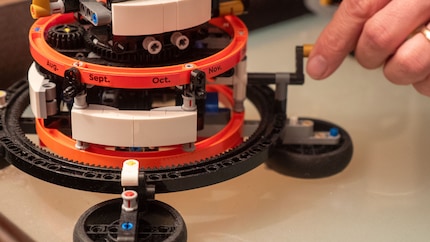
The earth orbits the sun, the moon orbits the earth. And I’m thinking to myself: «Great! Can we go outside now?» But Stephan isn’t done yet. He pulls out a small index card on which he’s jotted down the real-life dimensions.
How big would planet earth be?
The card answers questions I’d never have asked myself, but make the set really interesting. If the sun had a diameter of 8.5 centimetres, which it does in this model, how big would planet earth be? And at what distance would it be orbiting this miniature sun?
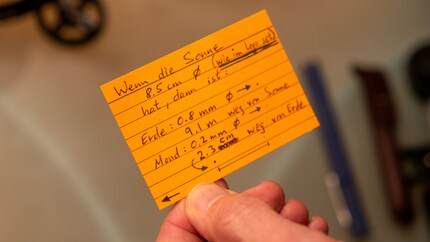
«Earth would be in the kitchen somewhere,» says Stephan. It would be 9.1 metres away and smaller than a pea. Much smaller, in any case. A tiny sphere with a diameter of 0.8 millimetres orbited by a 0.2-millimetre moon. And the two of us standing on it, staring into space with a telescope.
I tried out a good telescope once. It was an interesting experience, but I soon realised I was lacking lots of knowledge to make sense of what I’d just seen. My guess is many people new to telescopes are like me: high expectations but little knowledge. So our Lego experiment is a great way to manage expectations. Not to mention all the fun you could have using it with children.
The flat fits all our inner planets
Three more planets would fit inside the apartment, orbiting our sun, which is just over the size of a tennis ball. Mercury would be a good three and a half metres away in the living room and about 0.3 millimetres in size. Venus, which is comparable in size to earth, would be orbiting at a distance of 6.6 metres. And Mars, just under 14 metres away, would only be 0.4 millimetres in size. That’s the inner planets covered.
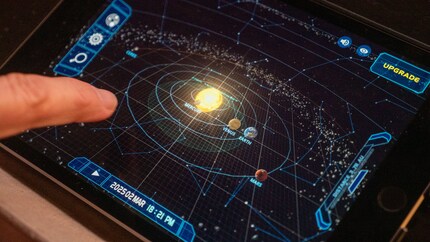
A bit further afield in the neighbourhood you’d find the much larger outer planets. Jupiter, a gigantic 8.5 millimetres in diameter, would be orbiting the house at a distance of 47.5 metres in our thought experiment. Saturn, another whopper with its diameter of 7.1 millimetres also, would be a good 87.5 metres away. And in the distance, about two and three football fields away, Uranus and Neptune would be hard to make out at three millimetres in diameter.
The stars in the distance
This is our neighbourhood, so to speak. The area we get to explore a little using our telescopes. And where is Proxima Centauri, the closest star? In reality, it’s 4.247 light years away. In our model it’s about here: İstanbul’a hoş geldiniz!

Source: Shutterstock
The most distant known star Earendel (page in German) would be a mind-blowing 16 billion kilometres away from our mini-model. With these dimensions in mind, expectations of a simple telescope automatically shrink. It’s already impressive we get to check out the planetary neighbourhood a bit with it. It’s amazing to see Jupiter and its moons or to take a closer look at the moon’s craters. Things get really interesting when you start getting into the subject.
Get informed before you look
Stephan recommends Stellarium Web, among other things. I recommend getting expert guidance if you want to explore the night sky. There are many exciting celestial events happening this year (page in German). Of course, you can read tons on the subject, too. After all, there’s endless information available. However, it’s much more fun if someone explains the ins and outs with maximum enthusiasm. That’s what Stephan does for me after a band of clouds has cleared, making way for a spectacular evening sky.

Being in the middle of the light-polluted city, we’re neither in the best location nor do we have the best material. The evening’s too bright to spot Saturn or Mercury before they disappear on the horizon. Instead, we look at Jupiter and Venus visible as a crescent (page in German).
I learn something about the Pleiades and Reflection Nebula, about the Orion Nebula and birth of stars (pages in German). For the time being, a decent pair of binoculars and someone good explaining will do. As well as a rough idea of the distances. That’s why it was worth starting off small.
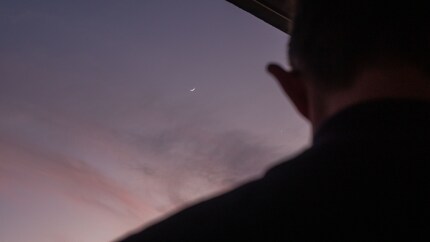
We’ll be spending a few more evenings tinkering with the entry-level telescope Celestron StarSense Explorer LT 70AZ. Watch this space for the review.
Simple writer and dad of two who likes to be on the move, wading through everyday family life. Juggling several balls, I'll occasionally drop one. It could be a ball, or a remark. Or both.
Interesting facts about products, behind-the-scenes looks at manufacturers and deep-dives on interesting people.
Show all